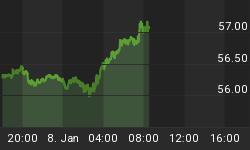Soccer, known commonly as football to the rest of the world from whence it originates, became an international craze throughout the late 19th and early 20th century. At that time, nations all over the world began the implementation of resoundingly important national sports. But in the U.S., “soccer”--like the metric system--was overlooked and overshadowed by “American football”, baseball and basketball.
It was, apparently, too reminiscent of British colonialism, and American wanted its own sports in a bid for hyper-nationalism.
Now, it’s a game of frantic catch-up because in the era of wild globalization, the rest of the world has spoken. Soccer, it is.
Even though played in the U.S. as early as American football, soccer failed to make a true entrance into American culture until the mid-1970s when the New York Cosmos signed Brazilian legend Pele to play.
Fast forward to 2019, and the NFL’s Dallas Cowboys were the most valuable sports franchise in the country, and the only one worth over $5 billion. As for soccer, for the second consecutive season, Atlanta United top the list with fewer zeroes, at just $500 million.
The NFL is undoubtedly the king of American sports, bringing in over $13 billion in revenue annually. In second place is Major League Baseball (MLB), with a total annual revenue of around $9.5 billion. The National Basketball Association NBA, encompassing the United States and Canada, brings in a total of $4.8 billion in revenue, while the National Hockey League (NHL) again, between Canada and the United States, brings in $3.7 billion annually.
On the other hand, Major League Soccer (MLS) is not obliged to make any financial data public, so it never has.
There are, however, estimates that its gross central revenue for last year was around $700 million. By comparison, professional soccer teams in England reported $7.3 billion in revenue in 2019.
And sponsorships remain a significant aspect reflecting on popularity and affecting profits on this side of the Atlantic.
For instance, annual revenue from NFL sponsorship averages $1.3 billion, with beer, trucks and fast food being among the largest spenders. By stark contrast, MLS sponsorship revenue was around a very meagre $75 million.
None of this means, however, that soccer isn’t popular in the U.S. The problem is this: Among the American billionaires and fans, soccer (aka ‘football’) is attractive--but mostly when it takes place outside the United States.
Over the last decade, American owners have taken over some of England's soccer powerhouses--a development that doesn’t necessarily sit well with the fans there as the new owners aren’t soccer enthusiasts. Instead, they’re bankers or owners of baseball or football teams in the U.S. They see it as pure capitalism rather than the usual extreme pride of ownership.
Things are changing, though--and some of those changes are coming home under the pressure of globalization. Many American investors are increasing their interest in the U.S. soccer teams for the first time--and those leagues and teams are desperate for it because they generally operate at a significant loss.
The reason for sudden interest? Fear of missing out.
But MLS investors are spending big to secure a share of the U.S. soccer market because their eyes are set on potential goldmines in the coming years. Related: Is A New Housing Bubble Forming?
Last year, data showed that the average MLS club was worth about $313 million, which represents 30% growth from the previous season. Its year-over-year growth outpaces other more popular sports. For instance, the NFL grew 11%, and the NHL only 6%.
That means they’ve reached their plateaus, more or less, while brand “new” soccer (at least in America) has tons of room to grow. That means lots of virgin opportunities for investors.
There are also other signs that growth will continue in the coming years. Two more clubs will join the league in 2020, one in 2021, two in 2022 and a 30th expansion franchise to be awarded in the near future. Additionally, the US and Canada’s soccer teams are preparing for a new national TV deal in 2023.
A big move will be this: The U.S. is hosting the World Cup in 2026, which will surely help local soccer, financially and fanbase expansion.
Soccer isn’t there yet, but in the age of globalization, it’s got nowhere to go but up.
By Anes Alic for SafeHaven.com
More Top Reads From Safehaven.com:
- Armed Troops Storm El Salvador’s Parliament
- Tesla Reopens Chinese Factory After Coronavirus Scare
- BHP Takes The Crown As World’s Top Copper Miner

















